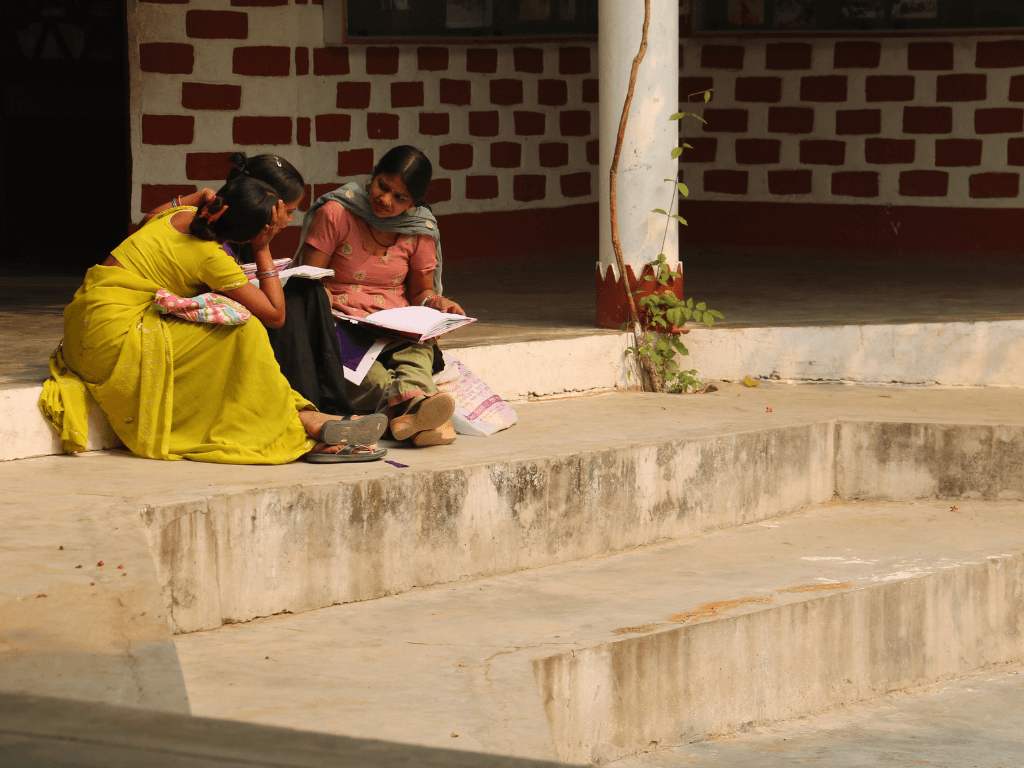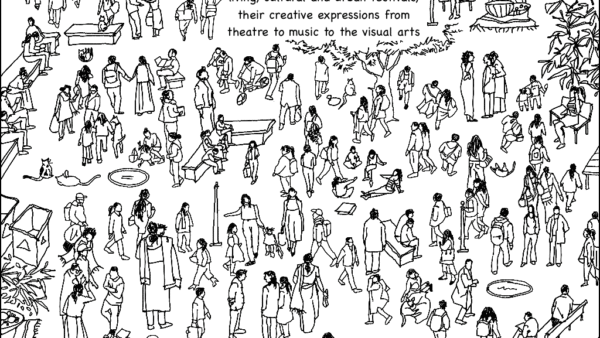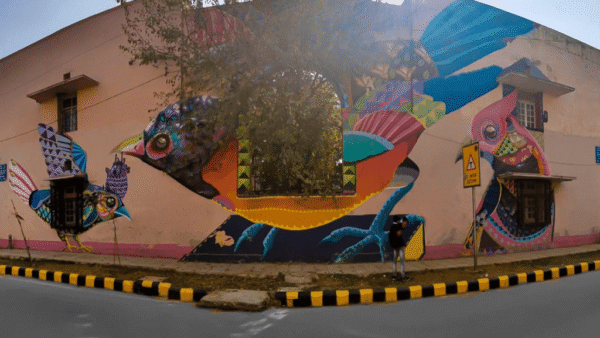Any settlement is an inscription in space of the social relations in the society that built it. Our cities are patriarchy written in stone, brick, glass and concrete.
Jane Darke, feminist geographer.
The way most Indian cities are designed and built shows exactly this – they are designed by men, for men. The relationship between urban infrastructure and women’s safety and freedom is explored less than it should be. Walkable roads, comfortable public transport, toilets and well-lit streets are basic amenities which give women easy mobility and access. With the rising crimes against women in public places, a gendered lens is important while planning cities and urban spaces. While some cities across the world have been addressing safety and sexual harassment by making out-of-the box changes, many are lagging in ensuring equity and accessibility.
A 2021 study on women safety in India by Breakthrough, a Delhi-based NGO, stated that 78.4 percent of the respondents (female or others) had experienced violence in public spaces.[1] A UN Women-supported survey in Delhi in 2018 showed 95 per cent of women and girls feel unsafe in public spaces.[2]
In France, a study conducted in 2013 by the National Institute of Statistics and Economics Studies found that every fourth woman experienced fear and 1 in 5 women have suffered from verbal harassment while walking on the street.[3] The fear of sexual harassment and violence women face while travelling in public transport, walking on streets and using other public spaces have not ebbed over the years. Yet, gender-inclusive or gender-sensitive planning and development has not become the norm in cities.
However, cities around the world have experimented to make women’s mobility safer or accessible. Some Indian cities offer free bus rides for women. This has had a great positive impact on their mobility. Delhi, Tamil Nadu, Karnataka, Kerala, Telangana and Punjab have the service, providing women with greater freedom, accessibility, economic opportunities, and a step towards fostering equality.[4]
Tamil Nadu launched the Zero Ticket Bus Travel Scheme in 2021. A year later, a study by Tamil Nadu’s State Planning Commission established that the scheme had helped women in multiple ways—more savings and better mobility; access to education, healthcare, employment and other essential services; increased work participation by way of lesser dependence on family members for transportation; and wider social networks.[5]
However, though a good move, free bus rides are not enough to move the needle for women’s safety and comfort. To improve mobility alone, women need better maintained buses, increase in frequency and last-mile connectivity. There’s housing, health, care work, labour force participation, recreation and more where gender-inclusive or gender-sensitive planning is called for. Making public transport safer is a route most cities have taken to improve women’s safety.
Brasilia
Brasília in Brazil adopted an important measure. Introduced in 2014, the safety law allows women to get off buses anywhere along a route after 10pm, including areas that are not traditional bus stops. Buses are required to meet this request and display information to make users aware of this right.
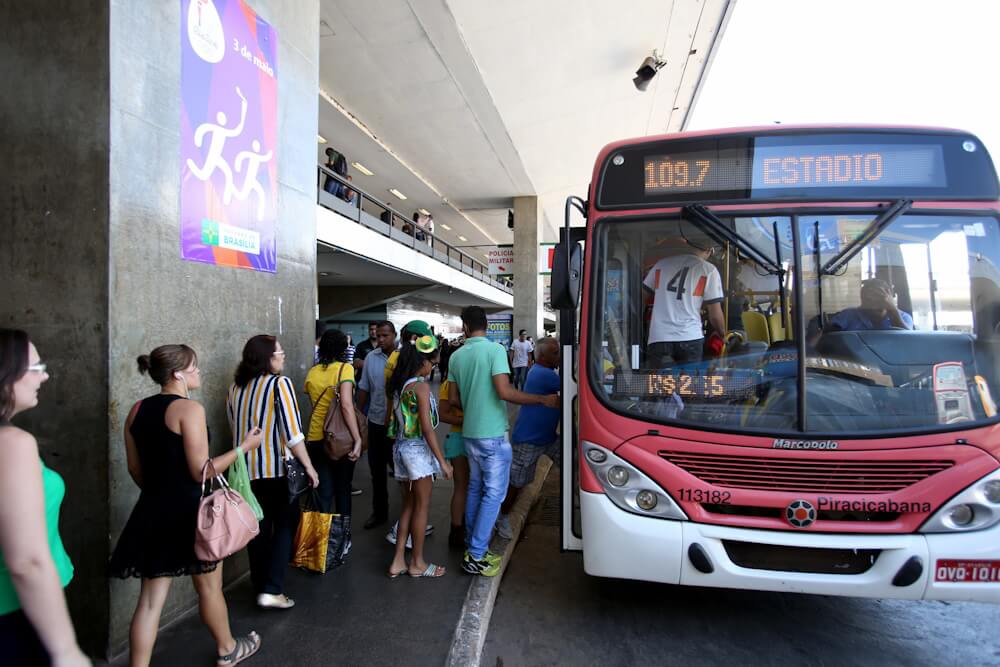
Photo: Agência Brasília/Wikimedia Commons
A study[6] on urban mobility in Brasília on users’ behaviour found that their preferences result from a combination of how transit services are designed – including route locations, cost, and convenience – and the user’s profile – his or her gender, age, income, and reason for travelling. This improved Brasília’s transport system without requiring significant investments in new infrastructure.[7]
Brazil has also adopted the Complete Streets approach, which reduced dependency on private vehicles by prioritising public transport, pedestrians and cyclists. Local governments gradually changed policies and interventions toward this equitable model by providing infrastructure such as bike lanes, broader sidewalks, benches and green spaces, thus improving road safety.[8]
Experts say if implemented properly, it can go a long way in making public spaces equitable, inclusive and safe.
Bogota
This Colombian city reshaped public transport to include women. This not only changed employment dynamics but also made people’s travelling experience smoother. It introduced a women-led bus fleet in 2022. With more than half of Colombia’s workforce made up of informal workers, this move has given women employment opportunities and dignity.
“These kinds of opportunities to enter the formal economy are seldom available to many working class Bogotanos — especially women — who often flounder in the informal economy,” said Diana Ruiz, who drives a La Rolita bus. Women drivers said that their traditional roles as caregivers make them more sensitive to the needs of riders going about their days in the traffic-clogged metropolis of 8 million people.[9]
Bogotá has also taken measures to make the rapid bus system harassment-free and safe. The purple patrol, a group of 500 police officers, hands over leaflets at bus stops to make it easier for women to file complaints. The leaflets have QR codes and videos showing people how to identify situations of sexual harassment and respond to them appropriately.[10]
Mexico city’s rising crimes against women prompted it to address travel too. Its gender-segregated metro train carriages and its ‘Let’s Travel Safely’ programme allocates three of the nine subway cars for women and children up to 12 years old.[11]
Vienna
In 1999, the City Women’s Office in Vienna conducted a survey, asking its residents how and why they traversed the city. The typical route for men was to and from work, but women’s daily routines included trips to schools, doctors, shops and visits to older family members. The survey led the city to reevaluate its long-term approach[12] to urban planning.
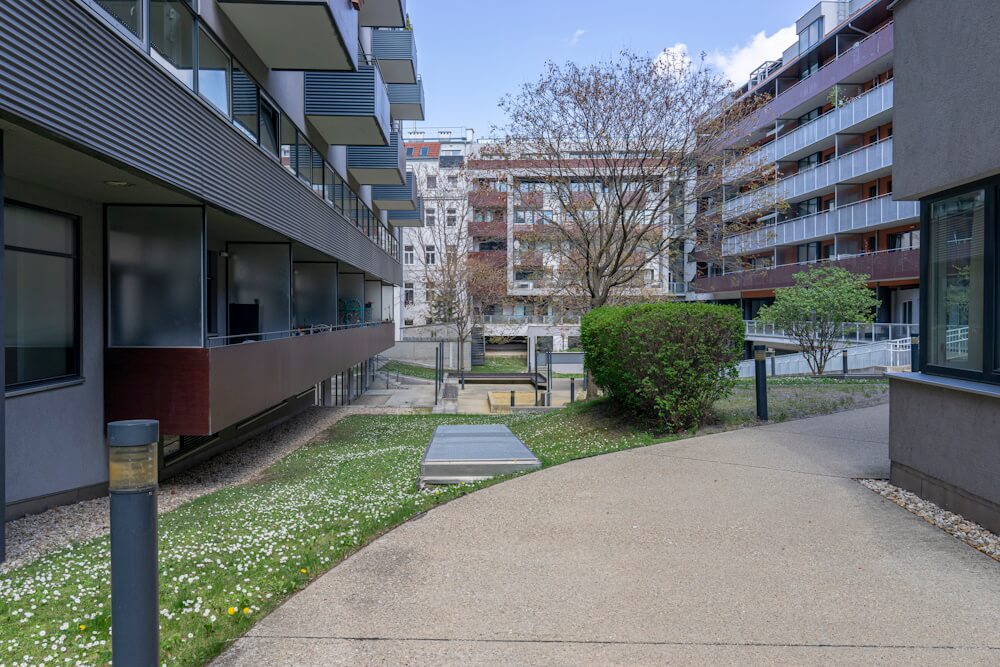
Photo: Thomas Ledl/Wikimedia Commons
Officials began to focus on accessibility, safety and ease of movement, first in Mariahilf, a designated pilot district for gender mainstreaming. They have now improved street lighting to make walking at night safer, widened more than one kilometre of pavement,[13] and brought in pedestrian-friendly traffic lights. One intersection was fitted with a ramp overpass[14] to make crossing safer for strollers and wheelchair users. There have been 26 new street lighting projects, and additional seating has been brought to nine different locations in Mariahilf.
Vienna also focussed on planning housing through a gender lens, taking findings from the survey. Under project Frauen-Werk-Stadt[15] (Women-Work-City), Vienna constructed big social and subsidised housing complexes in 10th and 21st districts. Designed by women architects, the housing project has taken into account the practical everyday needs of women. Huge open courtyards surround the apartments, providing outdoor spaces for children to play, and within the bounds of the complex there is a kindergarten, doctor, and pharmacist.[16] The nearby public transport networks provide easy access to schools and workplaces.[17]
Barcelona
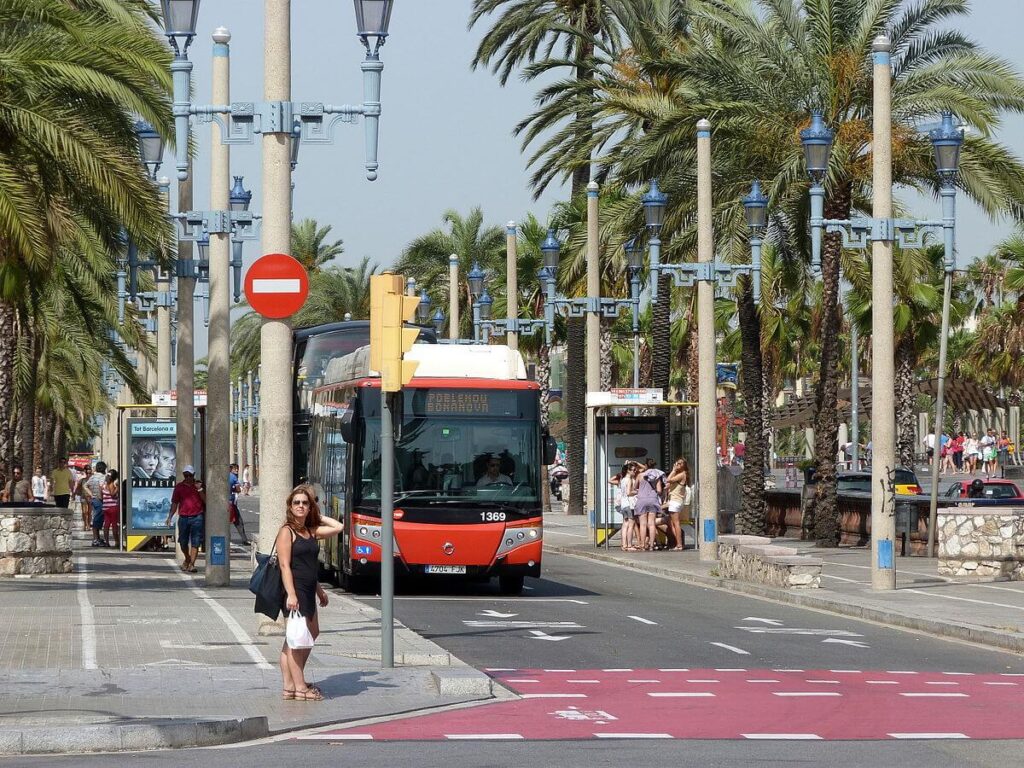
Photo: Magnus Manske/Wikimedia Commons
The City of Barcelona developed a new government measure: Urban planning with a gender perspective (Ajuntament de Barcelona 2017). The measure puts daily life at the centre of its policies. Daily life is broken down into four areas: productive (paid work), reproductive (career and domestic work), community, and personal (leisure and sport). It recognises that urban planning ‘is no neutral matter’. Urban planning with a gender perspective focuses on everyday experiences – local people are experts and they are consulted to build a bottom-up collective.
Initiatives under the new measure include pilot projects for small- and medium-scale urban changes to meet the needs and experiences of daily life, as well as initiatives for institutional change.[18]
India
Safetipin in its report, Women and Mobility, observes: Women encounter violence and harassment in some form in their everyday lives while using public spaces and public transport. Harassment can take various forms such as verbal harassment which may include cat-calling, teasing; visual harassment such as staring or leering or physical or sexual forms such as touching, groping, etc.
A study by Jagori in Delhi, back in 2010, showed 85.4 percent women saying that sexual harassment was very common in public places. It found that women face maximum harassment in marketplaces (84.9 percent), 83 percent at metro stations, 82.4 percent in areas around schools and colleges and 79 percent in industrial areas. In Guwahati, sexual harassment occurred on roadside (49 percent), using public transport (39 percent), in marketplaces (39 percent) and while waiting for public transport (28 percent).[19]
Chennai set up a gender and policy lab in 2022 to enhance women’s access to opportunities by improving safety in public spaces and transport through a collaborative approach. The city organised various campaigns and provided a platform for women and girls to speak up against sexual harassment incidents.[20]
The study, Women’s safety in public transport: A pilot initiative in Bhopal, by Water Resources Institute India finds that 88 percent of women reported that they have been harassed while using public transport in the capital city of Madhya Pradesh. Forty percent reported being harassed on a regular basis (at least once a week). This indicates how grave and important the issue is.
The number of women employees should be increased so as to have better participation of women in the planning and management of the public transport in a city. Employing more women staff in on ground operations will also help women commuters feel more confident while using public transport facilities.[21]
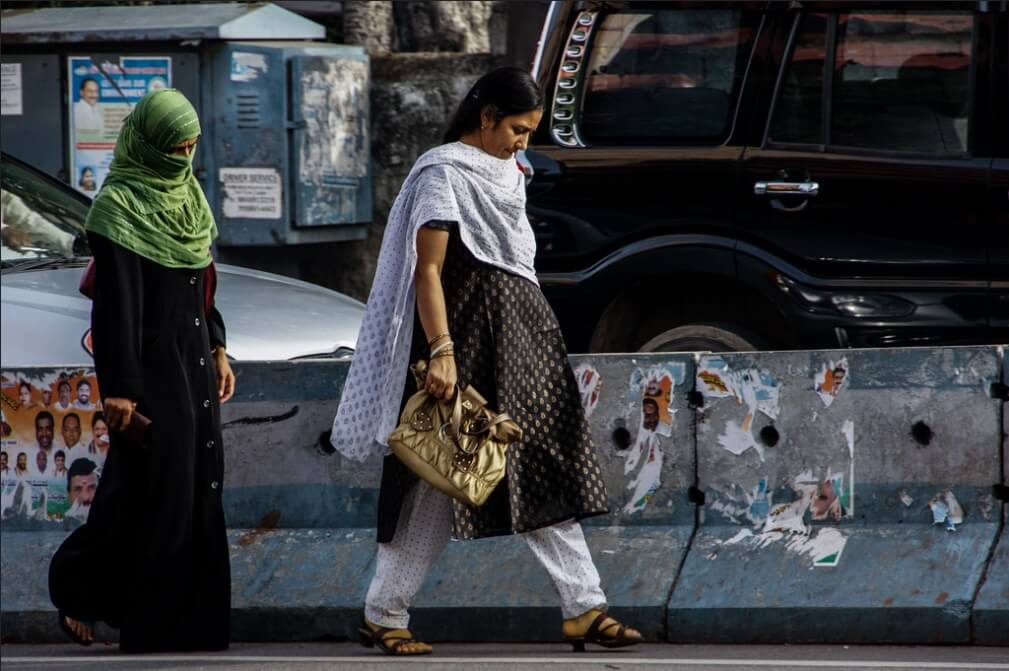
Photo credit: IgorZed/Wikimedia Commons
Reading list on gender, cities and spaces
Feminist City: Claiming space in a man-made world, the popular book by Leslie Kern, shows the inequalities shaping cities and how we can transform it into a city for everyone.[22]
Gender and The Indian City: Revisioning Design and Planning, edited by Madhavi Desai, merges ground research and case studies on a wide range of diverse issues, and contains solutions, and finally deliberates on how women can claim their legitimate space in the social construction of the city.[23]
City of Men: Masculinities and Everyday Morality on Public Transport by Romit Chowdhury looks at ways in which men occupy public spaces in Kolkata. Through ethnographic descriptions, it follows auto-rickshaw and taxi drivers and their interactions with traffic police and commuters to argue that the gendered fabric of urban life is the outcome of cooperation between different social groups.[24]
The Middle Class in Neo-Urban India: Space, Class and Distinction by Smriti Singh is an ethnographic study of Gurugram, National Capital Region, exploring themes such as class subjectivity, morality and social beliefs; life inside gated enclaves; family and everyday practices of class reproduction; and the process of othering and exclusivity, among others.[25]
Cover photo: Villalba/Wikimedia Commons

